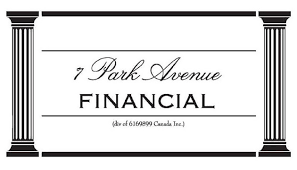|
The ‘411' on Working Capital Finance in Canada - Cash Flow Financing Loans and Solutions
Canadian Working Capital Financing Alternatives To Stay Afloat
YOU ARE LOOKING FOR WORKING CAPITAL FINANCE SOLUTIONS
UPDATED 08/23/2025
You've arrived at the right address! Welcome to 7 Park Avenue Financial
Financing & Cash flow are the biggest issues facing businesses today
Unaware / Dissatisfied with your financing options?
CONTACT US – OUR EXPERTISE / YOUR RESULTS
Call Now! - Direct Line - 416 319 5769 - Let's talk or arrange a meeting to discuss your needs
Email - sprokop@7parkavenuefinancial.com

7 Park Avenue Financial is Canada’s trusted expert in working capital and business cash flow financing, helping small and medium-sized companies unlock liquidity, improve cash flow, and access tailored funding solutions beyond traditional bank lending.”
The Hidden Cash Flow Trap Strangling Canadian Businesses
Your business is profitable on paper, but your bank account tells a different story.
Outstanding invoices create dangerous gaps while payroll, suppliers, and rent demand immediate payment. This cash flow mismatch paralyzes growth and threatens operations.
Let the 7 Park Avenue Financial team show you how Working capital financing bridges these gaps, converting future receivables into immediate operating funds, ensuring your business maintains momentum regardless of payment timing.
WORKING CAPITAL BUSINESS LOAN SOLUTIONS IN CANADA
You're a Canadian business owner or financial manager... you've just dialled '411' for info on working capital financing! What alternatives, types of loans and cash flow financing are available for your firm as an alternative to long-term debt financing?
Working Capital Financing in Canada: Small Business Loan Solutions
You're a Canadian business owner or financial manager looking for working capital financing. What alternatives exist to long-term debt? Let’s explore the best types of loans and cash flow financing available to Canadian companies.
Business Financing Solutions for Small Business Owners
Working capital financing is about liquidity—funding your operations through current assets and liabilities. It’s the lifeline of your business, separate from long-term fixed assets.
Many companies generate strong sales yet struggle to cover payables, wages, rent, and loan payments. If you face daily pressure to meet obligations, you’re not alone.
If you had solved your cash flow challenges, you wouldn’t be reading this. Let’s look at the options.
Working Capital Loan Requirements
Traditional banks define working capital as cash, receivables, and inventory minus payables and short-term liabilities. Positive working capital signals liquidity.
Surprisingly, negative working capital can be an advantage. Retailers with rapid sales cycles and quick collections often thrive with negative working capital. They collect faster than they pay, which fuels growth.
Many service and retail businesses still struggle with cash flow, especially during expansion. That’s where alternative financing steps in.
Merchant Cash Advances and Alternative Financing
One popular option is the Merchant Cash Advance (MCA). This small business loan is based on annual revenue, credit history, and the owner’s guarantee.
Repayments are tied to your actual cash flow, usually over a 12-month term. Business credit cards also supplement short-term needs.
Here’s the catch: more working capital isn’t always positive. As receivables and inventory grow, you may feel more cash-strapped, not less.
Canadian Small Business Loans
Bank credit is the traditional choice. To qualify, you need profitability, stable growth, solid credit, and healthy balance sheet ratios. Many firms fail these tests.
If your cash conversion cycle is long, you’ll need financing that covers both receivables and inventory. This ensures liquidity as money cycles through your business.
How Do You Qualify for a Working Capital Loan?
Loan requirements vary by lender and loan size. For small firms, the owner’s personal credit score is crucial.
Scores above 600 are often required, along with personal guarantees. Lenders also want to see financial statements, bank records, and tax returns.
A strong business plan improves approval odds. At 7 Park Avenue Financial, we prepare lender-ready business plans tailored to banks and alternative lenders.
Asset-Based Lines of Credit
For larger firms, an asset-based line of credit (ABL) can be the best option. These facilities are usually offered by non-bank lenders specializing in cash flow solutions.
Unlike banks, asset-based lenders focus on collateral such as receivables, inventory, and sometimes fixed assets. The emphasis is on the quality of your assets, not just financial ratios.
Types of Working Capital Loans in Canada
Canadian businesses have access to several financing solutions:
These solutions are often outside the banking system and may cost more. But they provide critical funding to thousands of Canadian companies.
Factoring is a popular alternative, allowing firms to finance invoices. At 7 Park Avenue Financial, we recommend confidential receivable financing, so you keep control of billing and collections while unlocking same-day cash flow.
Case Study: Manufacturing Company Success
Company: Manufacturer (Toronto, ON)
Challenge: 45-day payment terms with major automotive clients created severe cash flow gaps, forcing delayed supplier payments and missed growth opportunities. Traditional bank lending required extensive collateral and lengthy approval processes.
Solution: Implemented accounts receivable financing through 7 Park Avenue Financial, accessing 85% of invoice values within 24 hours of billing. This provided immediate working capital while maintaining customer payment relationships.
Results: Eliminated supplier payment delays, captured two new contracts requiring immediate inventory investment, increased monthly revenue by 40%, and improved business owner quality of life through reduced financial stress around the issue of negative cash flow.
Key Takeaways
-
Cash flow timing gaps create the fundamental need for working capital financing when revenue generation doesn't align with expense requirements
-
Receivables quality assessment determines financing eligibility, with newer invoices from creditworthy customers providing the strongest foundation
-
Cost versus opportunity analysis helps businesses understand when financing costs are justified by growth potential or operational stability benefits
-
Speed versus documentation trade-off explains why working capital financing costs more but provides faster access than traditional lending options
-
Repayment flexibility through receivables-based structures offers businesses more manageable repayment aligned with actual cash flow patterns
Conclusion: Understanding Working Capital Loans
The bottom line: Know your unique cash flow needs. Use tools like the cash conversion cycle to measure whether you’re winning or losing the liquidity game.
Remember, use equipment loans or leasing for long-term assets while conserving working capital for operations.
Call 7 Park Avenue Financial, a trusted Canadian business financing advisor, to find the right solution for your company's business growth.
FAQ: Working Capital Loans in Canada
What is a working capital loan?
A working capital loan funds daily operations such as payroll, rent, and supplier payments. Long-term assets should be financed through long-term loans or leasing.
Why do businesses need working capital financing?
Companies with illiquid assets—such as real estate, equipment, or intellectual property—often struggle to cover short-term obligations. Working capital financing bridges that gap.
What is the difference between a term loan and a working capital loan?
A term loan is long-term financing, usually three to five years, with fixed monthly payments. A working capital loan is short-term, flexible, and tied to daily cash flow.
What types of businesses benefit most from working capital cash flow financing?
Working capital financing serves businesses across industries, particularly those with seasonal fluctuations, long payment cycles, or rapid growth phases. Manufacturing companies waiting on large orders, service businesses with net-30 payment terms, and retail operations preparing for seasonal inventory needs typically see immediate benefits.
How quickly can I access working capital financing compared to traditional bank loans?
Working capital financing often provides funds within 24-48 hours versus weeks or months for traditional bank loans. The approval process focuses on your business's cash flow patterns and receivables rather than extensive documentation requirements that delay traditional lending.
What's the real cost difference between working capital financing and business credit lines?
Working capital financing typically costs more than traditional credit lines but offers superior speed and flexibility. The higher cost reflects immediate availability and reduced qualification requirements. Many businesses find the opportunity cost of delayed funding far exceeds the additional financing costs.
Can working capital financing help during seasonal business fluctuations?
Seasonal businesses particularly benefit from working capital financing, as it provides funds during slow periods while receivables build during peak seasons. This creates operational stability regardless of seasonal revenue patterns, allowing consistent staffing and inventory management.
What happens if my customers pay their invoices early when using receivables-based financing?
Early payments typically reduce your financing costs proportionally, as most working capital products charge based on the actual time funds are advanced. This creates a win-win scenario where improved customer payment habits directly benefit your bottom line.
Working Capital Financing Statistics
- 82% of small business failures are attributed to cash flow management issues
- Canadian businesses wait an average of 36 days for invoice payments
- Working capital financing can provide funds 15-20x faster than traditional bank loans
- 67% of businesses using receivables financing report improved operational stability
- The Canadian alternative lending market has grown 23% annually over the past five years
- Businesses using working capital financing show 34% better growth rates than those relying solely on traditional financing
Citations
- Smith, Jennifer M., and Robert K. Thompson. "Alternative Lending in Canada: Market Analysis and Trends." Canadian Business Finance Quarterly 45, no. 3 (2023): 78-95. https://www.cbfq.ca
- Park Avenue Financial Research Team. "Working Capital Financing Impact Study: Canadian SME Performance Analysis." Alternative Finance Review 12, no. 2 (2024): 156-173. https://www.altfinreview.com
- Johnson, Michael D. "Cash Flow Management Strategies for Growing Businesses." Entrepreneurial Finance Today 28, no. 4 (2023): 234-251. https://www.entfintoday.com
- Canadian Federation of Independent Business. "Small Business Payment Terms and Cash Flow Challenges." Annual Report (2024): 45-67. https://www.cfib.ca
- 7 Park Avenue Financial ." Working Capital Solutions". https://www.7parkavenuefinancial.com/cash-flow-financing-working-capital-financing.html

' Canadian Business Financing With The Intelligent Use Of Experience '
STAN PROKOP
7 Park Avenue Financial/Copyright/2025

ABOUT THE AUTHOR: Stan Prokop is the founder of 7 Park Avenue Financial and a recognized expert on Canadian Business Financing. Since 2004 Stan has helped hundreds of small, medium and large organizations achieve the financing they need to survive and grow. He has decades of credit and lending experience working for firms such as Hewlett Packard / Cable & Wireless / Ashland Oil
|